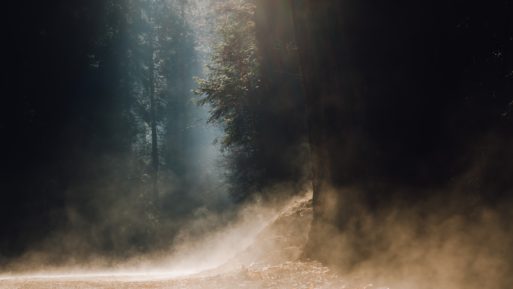
Emily Dickinson, one of the greatest American poets of all time, is no lightweight when it comes to exploring death. In her poem “Death is a Dialogue,” Dickinson touches on a few contrasting ideas that portray death as a complex experience.
“Death is a dialogue,” the poem begins, “between / The spirit and the dust.” Immediately, you know there is something both natural and supernatural existing in the theme, and Dickinson continues to provide lines rich with metaphor. The lines are so simple and yet so fraught; dust would appear to be a solid, attainable matter, while souls have a kind of illusive, mystifying quality. And yet, while we expect the symbols in poetry to be more illusive, this contrast arises fairly soon and presents itself directly in Dickinson’s piece.
“Death is a dialogue between / The spirit and the dust.”
The third line furthers the conversation between Death and Spirit that is mentioned in the title and first line. “’Dissolve,’ says Death. / The Spirit, ‘Sir, I have another trust.’” Yet again, the exchange is so straightforward, but still remains full of metaphor. Death, or at least the human conceptualization of it, wants the human spirit to dissolve along with the dissolution of the human body. Judging by appearances, it seems as if a person’s spirit, personality, and vitality dies along with their physical body. In the poem, however, the character of the Spirit suggests an alternative: that it won’t disappear along with the body. “Death doubts it, argues from the ground,” continues the poem, “The Spirit turns away, / Just laying off, for evidence, / An overcoat of clay.
These lines hint at many deceptions happening between the realities of death, nature and the human psyche. From the perspective of Death, which seems to represent human consciousness, the end of a life should have ultimate finality. Everything that has made that person who they are should dissolve into dust and return to the earth. But according to Spirit’s perspective, which seems to represent faith, the human body is just one aspect of the human being as a whole. The soul can never be dissolved, even though it can’t be seen – a concept that can be difficult to grasp.
To make the situation easier to process, the Spirit character utilizes clay as a physical representation of what cannot be so easily seen. In the end, a compromise of sorts happens between the laws of nature and spirituality, so that both elements may feel justified.
“The Spirit turns away, / Just laying off, for evidence, / An overcoat of clay.”
The characters in Dickinson’s poem play with the unknowns of life after death and speculate as to what that existence might be like. The rhythm is punchy, and complimented by a direct tone and simple dialogue. That being said, Dickinson’s simple diction does not mean she lacks complexity of thought, and the reader has to analyze the poem several times in order to unpack each idea. If you sit with it long enough, you might find that it explores the limitations of human knowledge and the existence of spirits beyond our mortal spheres. Indeed, Dickinson confronts the very heavy subject that is death with optimism, and provides a fascinating perspective on what is typically considered a somber topic.
Check out more poetry relating to the end-of-life experience on SevenPonds in the work of Wallace Stevens or Christina Rossetti

 “Death is a Dialogue” by Emily Dickinson
“Death is a Dialogue” by Emily Dickinson




 Flawed Kidney Function Test Discriminated Against Black Patients
Flawed Kidney Function Test Discriminated Against Black Patients

 Harmony Amidst Change: Japan’s Kezouin Fuchu-shi Cemetery
Harmony Amidst Change: Japan’s Kezouin Fuchu-shi Cemetery














